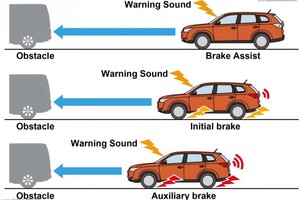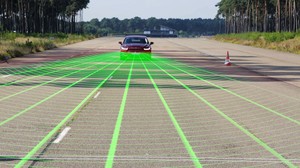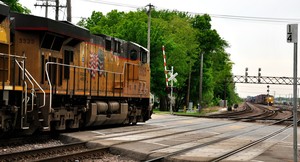
Tens of thousands of people die annually in highway or railway accidents, most of which could have been prevented. Those same accidents caused millions of dollars in property and other damages.
We believe, and the National Transportation Safety Board (NTSB) agrees, that many of these accidents could be prevented if we were using collision technology more effectively and consistently. This technology is already readily available but the implementation has either been delayed or viewed as only a luxurious upgrade for a few users. Pursuing this issue is on the NTSB’s Most Wanted List of transportation safety improvements for the next two years.
As previously stated, technologies already exist that provide a safety net for transportation operators in both the railroad and highway traffic industries. While these operators are responsible for following safety regulations and protocols, we also know that errors happen. These existing technologies such as collision warnings and autonomous emergency braking in highway vehicles will further decrease needless accidents.
Let’s take a closer look at the issue and related statistics.
Highway collision prevention technology
Motor vehicle crashes are the leading cause of death and injury in the United States with more than 35,000 people being killed in 2015. Two types of driver error are typically the cause behind most crashes, according to the NTSB. In 2015, it was estimated that 94 percent of traffic accidents were due to driver error. These two types of driver error fall into the categories of driver inattention and drivers leaving the roadway because they failed to operate the vehicle properly.
Two types of collision reduction technologies already exist but are not implemented to their fullest capabilities. The two types of technology are forward Collision Warning Systems and Autonomous Emergency Braking systems (AEB). These two technologies alone would help mitigate the impact of rear-end crashes, which represent nearly half of all two-vehicle incidents.
Other technologies such as adaptive cruise control, lane departure warning systems, blind spot detection systems, and advanced lighting technology are other technologies that are available to help make traveling roadways safer for all. Studies show that implementing the various forms of collision avoidance technology reduces the number crashes by anywhere from five to 19 percent, depending on the technology.
The question becomes, if this technology already available, why isn’t it used? In passenger vehicles, the availability varies by vehicle manufacturer and model. In many cases, crash avoidance technology is made available only through a luxury upgrade. We would argue that safety is never a luxury. It is a necessity that should be available to any and all consumers.
Fortunately, vehicle manufacturers are listening. Last March, passenger vehicle manufacturers agreed to install collision avoidance systems as standard equipment in their newer models. The National Highway Transportation Safety Administration has also agreed to add two AEB systems to its New Car Assessment Program’s rating system. We believe the next major step is to educate consumers on the importance of these systems and how to find the right car with those systems for their needs.
When looking at commercial vehicles, we join the NTSB in stating that the NHTSA (National Highway Traffic Safety Administration)must develop performance standards for collision avoidance systems in commercial vehicles. We also believe that operators shouldn’t wait for this to be regulated. They should take the safety of their drivers and the public into serious consideration as they outfit their vehicles with the appropriate technology.
Railway collision avoidance technology
The issues surrounding collision avoidance technology is perhaps even more frustrating than the lack of implementation in the highway transportation category. According to the NTSB, they have been calling for Positive Train Control (PTC) for an astounding 45 years, yet it still has not been fully implemented in our commuter, intercity, and freight railroads.
PTC’s job is to precisely locate a train along the railroad and enforces signal and speed restrictions. It is a proven technology that prevents train-to-train collisions over speed derailments and unauthorized train movement. Congress and regulation agencies have issued PTC implementation mandates, but they continue to allow delays in compliance. For example, PTC technology was required to be complete nationwide by the end of 2015 but Congress gave railroads an additional three years to complete the PTC implementation. We join the NTSB in asking that railroads not push this deadline and that they complete the implementation as soon as possible.
a Free Consultation





